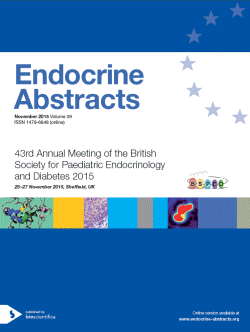Searchable abstracts of presentations at key conferences in endocrinology

43rd Meeting of the British Society for Paediatric Endocrinology and Diabetes
ea0039cme2 | (1) | BSPED2015
Consultant paediatric endocrinologist, Great North Children’s Hospital, Newcastle Upon Tyne
Polycystic ovary syndrome (PCOS) may be diagnosed in adult women using the Rotterdam criteria and includes the presence of at least two of the following:- androgen excess, ovulatory dysfunction, or polycystic ovaries on ultrasound scan. The diagnosis of PCOS in adolescents is challenging since these criteria may define normal pubertal physiological features. PCOS is a diagnosis of exclusion and investigation for other possible underlying pathologies, such as non-classical cong...
ea0039cme3 | (1) | BSPED2015
Approach to adrenal insufficiency
Adrenal insufficiency represents a sign and symptom of an underlying specific condition. A key diagnostic question is the differentiation between primary and secondary/ tertiary adrenal insufficiency (AI) to define the aetiology and manage the patient appropriately. The most common cause for primary adrenal insufficiency is congenital adrenal hyperplasia (CAH) representing a group of autosomal recessive conditions leading to glucocorticoid deficiency and other steroid hormone ...
ea0039cme5 | (1) | BSPED2015
Interpretation of dynamic tests
Whilst some hormones are secreted constantly, others have diurnal (eg. cortisol and androgens) and pulsatile (eg. growth hormone) secretion. As a consequence they require dynamic function tests to stimulate their production. It is worthwhile remembering that background data is not only limited but also often historical, going back over many decades. Often different units have different tests, assays & also cut-offs, which make comparison difficult. In a previous national a...



